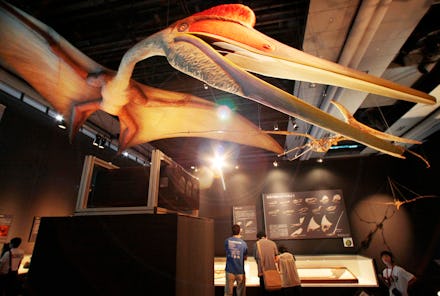A new relative of the pterodactyl was discovered in Patagonia

Paleontologists in Argentina's Patagonia region just published research on a new species of prehistoric reptile that sheds light on how reptiles went from walking to flying.
The species, a pterosaur dubbed "Allkauren koi," is from the Jurassic Period of the Mesozoic Era, a 180-million-year period in Earth's evolution when reptiles ran the show. Scientists don't know much about pterosaurs from that period — but this new discovery of a smallish relative of the pterodactyl might change that.
According to Diego Pol, a member of the research team and a paleontologist at the Museum of Paleontology Egidio Feruglio in Trelew, Argentina, our understanding of pterosaur nervous systems was based on the brains of two pterosaurs: a very early one that was similar to a crocodile, and one that was more like a bird. The former was primitive; the latter had a big, evolved cerebellum, adapted for fine sensorial and motor integration — in other words, flying.
The Allkauren koi is, chronologically, right in the middle of the timeline between the two. Researchers had point "A" and point "B" in the pterosaur evolution. The Allkauren koi is the roadmap.
"We can now understand how the brain was modified in several steps to apply being able to fly," Pol said in an interview. "This can lead you to understanding the origin of flight ... an event that has appeared only a few times in the history of life."
The find was lucky. Even though the 170-million-year-old bones of the Allkauren were found 10 years ago, Pol said they were preserved in very hard limestone. Because of that hard material, the animal's brain case was preserved in a three-dimensional structure — as opposed to the more-common 2-D slab — making a reconstruction of the brain mold easier to build and research.
Fully understanding the discovery is going to take time, of course; Pol said his team is still going through limestone slabs for more fossils. But the Patagonian finding could offer a lot of new information on a largely unknown age of Earth's animals — and just how they ended up taking flight.
"It's a nice discovery because we know very little from this particular period of time," Pol said. "We still have more remains to study and prepare. But we may have a full skeleton to reconstruct. This is a major contribution to understanding evolution."